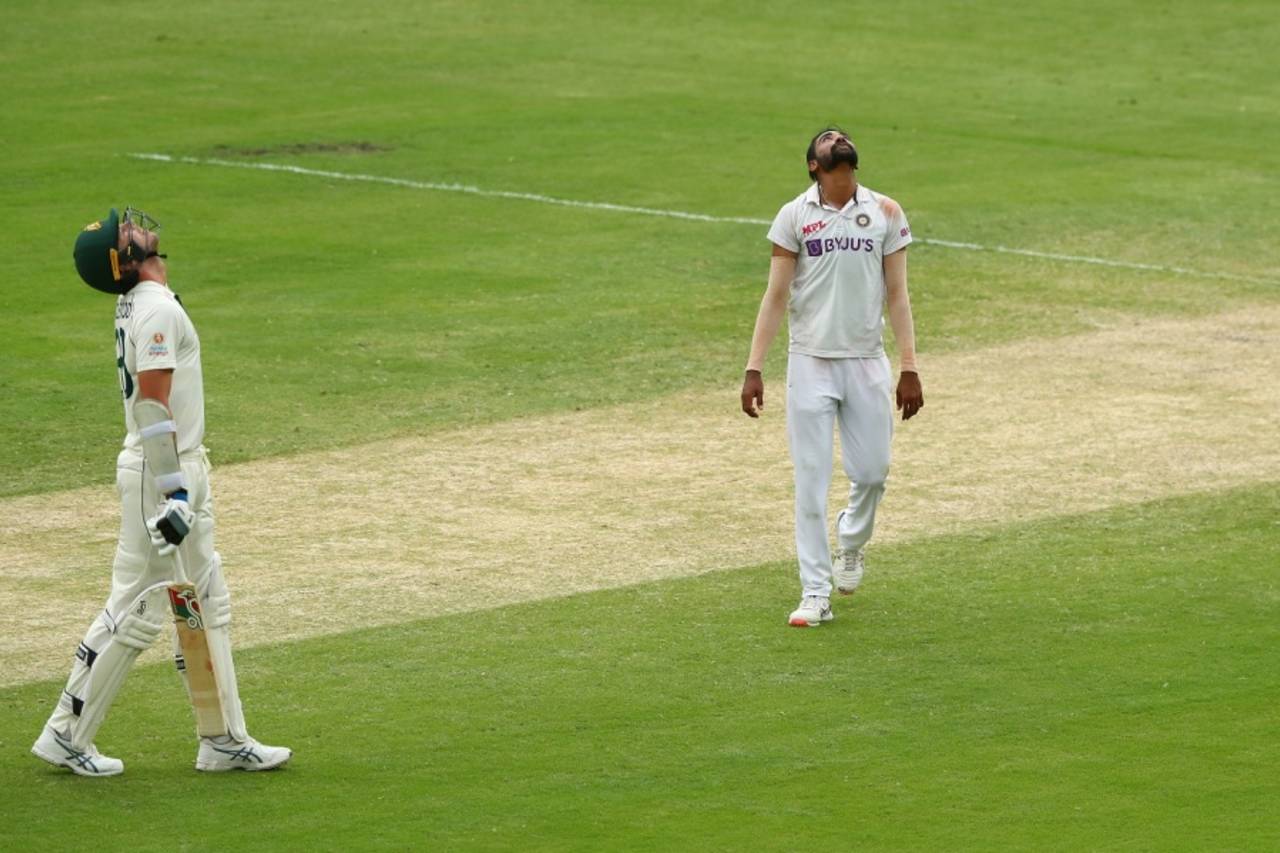How good were India in Australia? Let's look at the control numbers
How often did India and Australia produce uncertain responses from the opposition batsmen, and how often did that uncertainty result in a wicket?

Through the series, it took 11.3 not-in-control balls for India to lose a wicket; for Australia, that figure was 8.5 • Cricket Australia via Getty Images
Two events of the sort that ought to occur not more than once in six series of four Tests apiece took place in this Australia-India series: India were bowled out for 36 in Adelaide, and then batted out 131 overs for the loss of just five wickets in the fourth innings in Sydney to draw the Test. On the surface these are rare events but look deeper and they are even rarer.
Australia's perfect storm catches India in the wrong place at the wrong time
How close was the England-India series?
Bruised and abused, Indians make their own luck at the SCG
Stats - Pujara's marathons, India's debutant deluge, and Lyon, Starc in elite company
Tim Paine: Australia lost key moments throughout series
India were desperately unlucky with injuries both between matches and during them. They were also part of an unlucky once-in-a-generation collapse, but overall, once the ball was in play, India were the luckier side in the series - just like they were the less lucky one in England in 2018.

On the 2018 tour of England and the one to New Zealand in 2020, India showed they had the resources to get into competitive positions, but were thwarted by the depth of the home sides - which is usually accentuated in such circumstances because the secondary skills of allrounders blossom in familiar conditions. First Sam Curran and then Kyle Jamieson thwarted India with the bat, much like R Ashwin and Ravindra Jadeja tend to do at home for India at times when the opposition feels they are just one push away from ascendance.

India had two left-hand batsmen - both in the lower middle order but not restricted to those positions - and Cummins didn't manage to get either of them out in the nine innings they batted between them. Close to 30 overs of bowling for 91 runs and zero wickets to Cummins is a win for the strategy, but it doesn't mean Cummins is an easy bowler to face for left-hand batsmen. Coming into the series he averaged 19.6 against right-hand batsmen and 25.1 against left.
It's not always that the luckier side wins; rather, luck becomes more crucial when two evenly matched sides face off. The last time England toured India, for example, they were luckier, losing a wicket every 12.5 balls of indecision as against India's 11.9. However, India's bowlers were superior: they created a false response every 5.6 balls as against England's 7.6. That's 25 more false responses, or two wickets, in a day's bowling. When India toured Australia, this difference was down to nine balls in favour of the hosts. India created 13 more opportunities in a day's bowling than England in 2018. These are close enough margins for luck to play a part. Can England come as close to the hosts as India have been doing on their recent difficult tours?
Sidharth Monga is an assistant editor at ESPNcricinfo